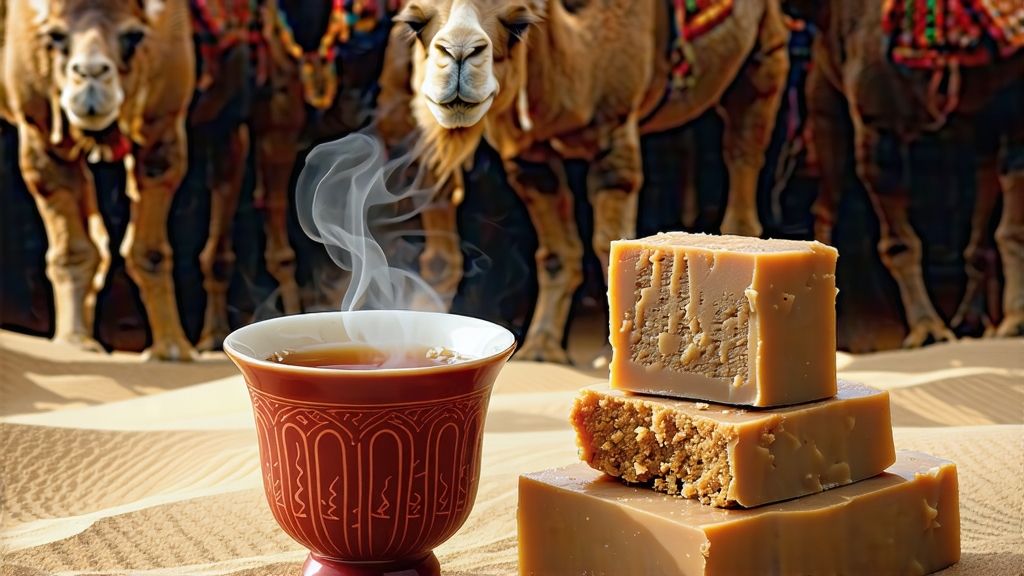
Among the six major chromatic families of Chinese tea, dark tea (heicha) is the most migratory: it was born on the misty mountains of Hunan, trekked across the Gobi on camelback, and today quietly ferments in the cellars of Paris and Brooklyn. Within this family, Fu brick tea—Fuzhuan cha—occupies a singular throne. Unlike the looser-leaf Liu Bao or the disk-shaped Pu-er, Fu brick is a compressed rectangle whose interior blooms with a living “golden flower” microbiome. One sniff of its dried wedge releases dried jujube, wet earth, and a faint suggestion of sandalwood that once perfumed the sleeves of Tang-dynasty traders. To understand why emperors once weighed it against silver and why Tibetan monks still stir it into yak-butter broth, we must follow the brick from leaf to liquor.
-
From War Refugee to Imperial Tribute
The origin myth begins in 1368, when fleeing civilians from Anhua County crossed the Miluo River carrying armfuls of coarse summer tea. To lighten their load they steamed, piled, and hand-pressed the leaves into bricks, unintentionally triggering a slow fermentation inside the straw-lined bundles. Months later on the frontier, the tea had mellowed, its caffeine half-tamed, its sugars darkened into molasses depth. Mongol cavalrymen found that a walnut-sized shard dissolved in salted water settled stomachs soured by mare’s milk and saddle motion. Word rode eastward; by the Jiajing era (1522–66) the Ming court listed “Fu-cha” among tributes reserved for the Lunar New Year audience. The Qing further codified production, establishing the “Fu brick Office” in Jingyang, Shaanxi, whose artisans still sign each brick with a tiny brass stamp bearing the Chinese character 福—fortune. -
The Microbe That Signs Its Name
What distinguishes Fu brick from every other dark tea is Eurotium cristatum, a filamentous fungus that colonizes the leaf pile during the 20-day “flowering” stage. Under 28 °C and 78 % humidity the fungus sprouts golden cleistothecia visible to the naked eye—locals call them “golden flowers” (jin hua). Far from spoilage, these speckles are a quality marker: bricks carrying fewer than 20 000 colonies per gram are rejected for export. The microbe secretes enzymes that cleave bitter catechins into softer gallic acid and releases a rare polyketide that tastes uncannily like dried longan. Modern pharmacology credits the fungus with statin-like lipid modulation, explaining why Tibetan high-plateau diets heavy in yak fat remain surprisingly cardio-friendly. -
Crafting the Brick: Seven Steps to Microbial Heaven
a. Picking: Only the 3rd–5th mature leaves of Camellia sinensis var. assamica are taken after the Dragon Boat Festival, when lignin is high yet fibers remain pliable.
b. Pan-fixation: A 3-minute 280 °C wok toss kills leaf enzymes but preserves spore-forming microbes riding on the leaf surface.
c. Rolling: The hot leaves are twisted into cords tight enough to trap air yet loose enough for future airflow—critical for fungal respiration.
d. Piling: Seven-foot heaps covered in wet linen enter a controlled 12-hour “wet piling” phase, essentially a compost pre-game that jump-starts bacterial communities.
e. Pressing: 1.2 kg of piled tea is steamed for 8 seconds, tipped into a cedar mold, and compressed under 50 metric tons for six breath-held minutes. Cedar lignans seep into the brick, adding incense notes.
f. Flowering: Bricks are stacked inside a subterranean kiln where a charcoal brazier maintains 28 °C and 78 % RH. Over twenty days the golden flowers bloom; artisans listen for a faint rustle—fungal hyphae shrinking and cracking the brick surface, a sign of successful colonization.
g. Drying & Aging: A 48-hour 45 °C desiccation halts fermentation at its sweetest point, after which bricks rest in ventilated lofts for a minimum of three years before market. Connoisseurs cellar them like Bordeaux; four-decade bricks auction for the price